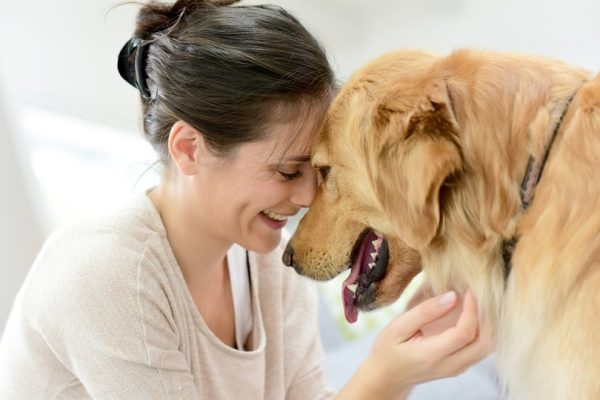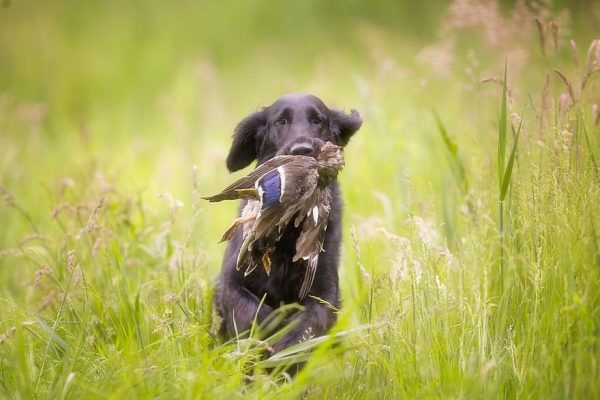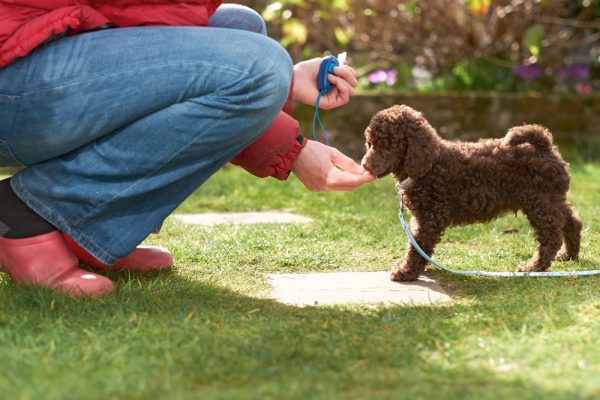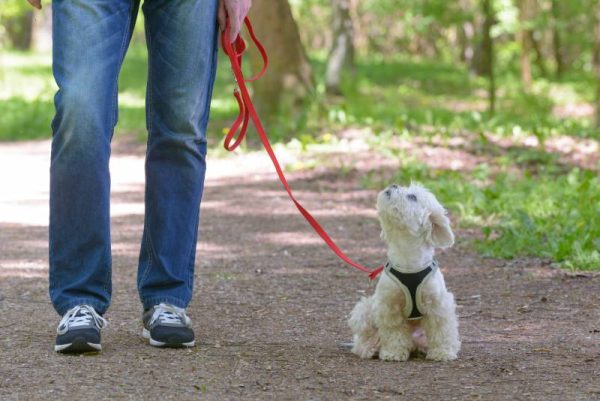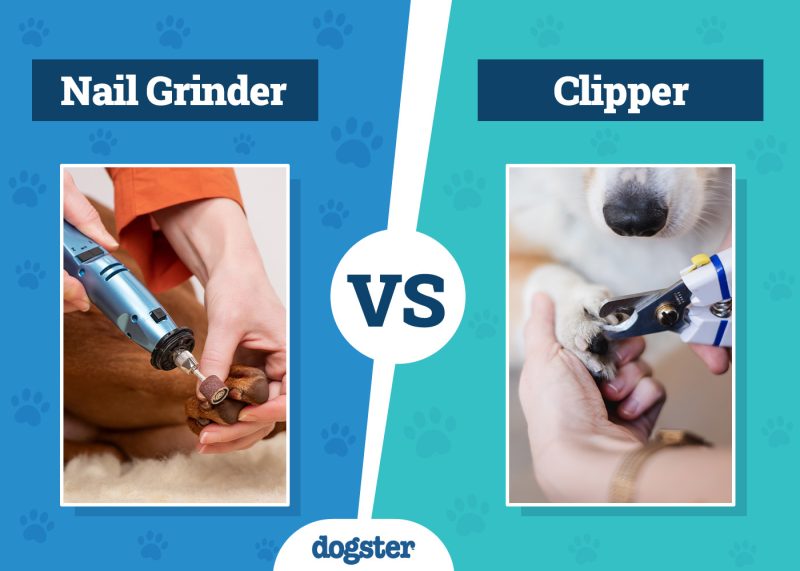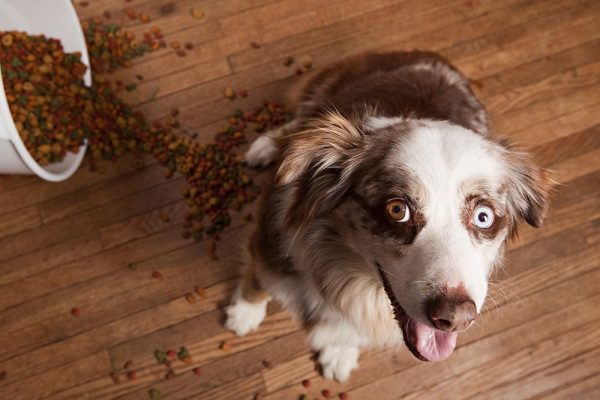In this article
View 8 More +If you’re a fan of big dogs, you’re sure to very quickly fall in love with the American Mastiff. These are simply massive dogs with stores of courage and hearts of gold—the epitome of the term “gentle giant”.
The American Mastiff was developed in Piketon, Ohio by crossing Anatolian Mastiffs and English Mastiffs to create a mastiff similar in appearance to other mastiff breeds, but healthier. If you’re intrigued by these gigantic but meltingly sweet dogs, read on to find out more.
Breed Overview
Height:
28–36 inches
Weight:
140–200 pounds
Lifespan:
8–12 years
Colors:
Fawn, apricot, brindle
Suitable for:
Any loving and committed family
Temperament:
Loving, sensitive, dignified, steady, patient, alert
American Mastiffs have short and dense coats, and it’s very uncommon for them to have long coats, though you do come across “fluffy” American Mastiffs from time to time. They’re massive dogs with powerful, strongly-built bodies, dark, rectangular-shaped muzzles, and broad but in-proportion heads. The skin isn’t as wrinkly as some breeds that look similar to American Mastiffs, and the expression is gentle but alert.
American Mastiff Characteristics

American Mastiff Puppies
If you acquire your American Mastiff puppy via a respectable breeder, prices can be quite high. If you’re open to a variety of mastiff-type dogs, adoption is a good alternative—you can check out rescue organizations that specialize in rehoming mastiffs.
Sadly, these sweet dogs are sometimes relinquished, and it’s harder for bigger dogs to find new homes due to their size. However, many large dogs—especially mastiffs, thanks to their moderate energy levels—do perfectly well living in apartments or condos as long as they get enough daily exercise and stimulation. So, if you live in a smaller home but would like to adopt a mastiff, don’t let that stop you!
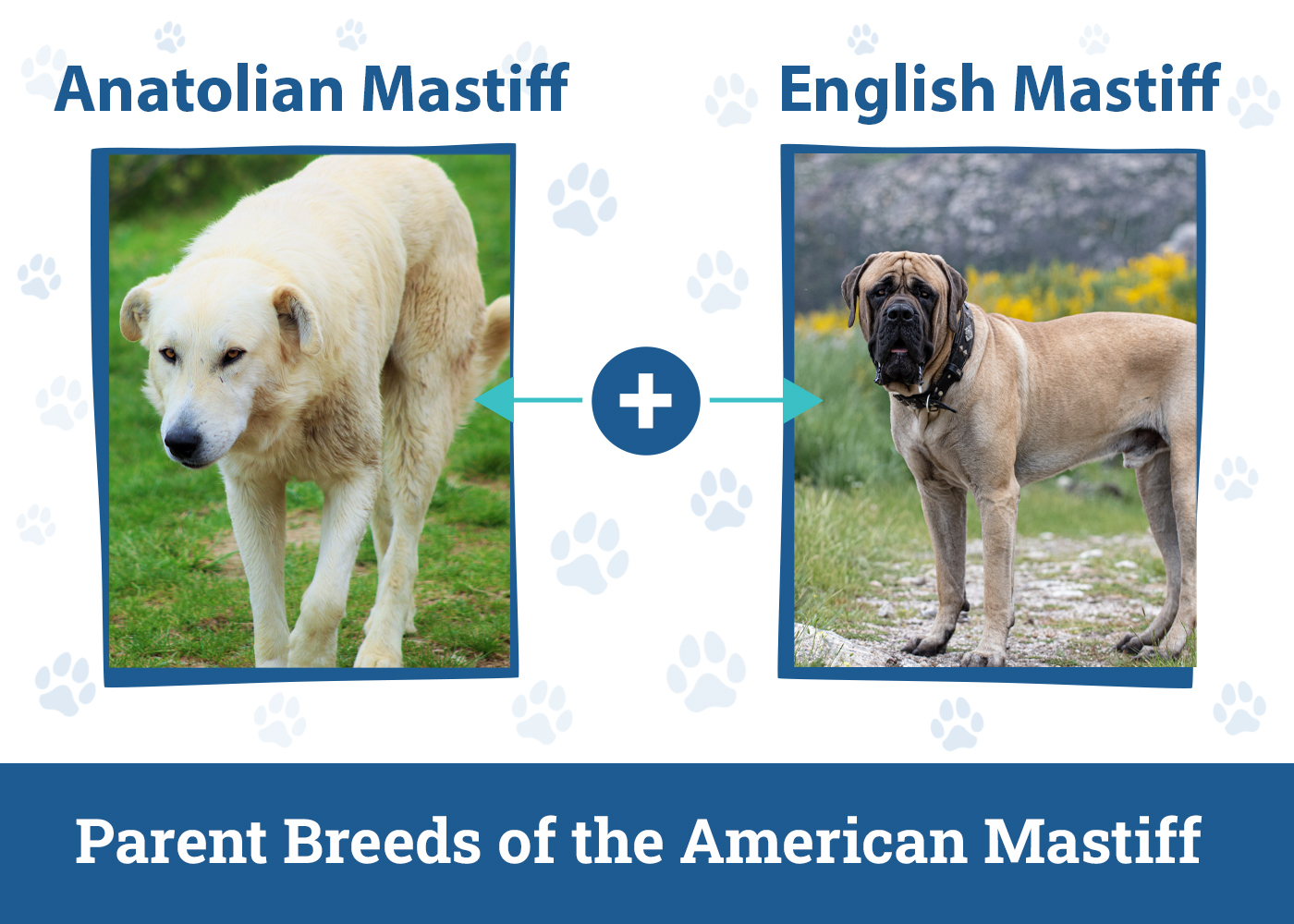

Temperament & Intelligence of the American Mastiff
Are American Mastiffs Good for Families? 🧑🧑🧒
As with any breed, socialization and training is crucial for ensuring your American Mastiff settles perfectly into family life but, if you’re committed to doing that, you’ll likely reap the rewards in the form of an absolutely wonderful canine companion.
Well-socialized American Mastiffs are some of the sweetest and gentlest family dogs with patience in abundance, which means they often get on well with children. That said, the American Mastiff’s kind nature shouldn’t be taken advantage of—children need to know how to respectfully and gently interact with them for things to work out.
It’s best to supervise interactions with small children as they may not understand boundaries yet, so could try to grab at the Mastiff or pull on their tail.
Does The American Mastiff Get Along with Other Pets?
If you’re committed to making sure your American Mastiff is properly socialized with other pets in your home, there’s a much higher chance they’ll get along well with other pets. It’s best to start this socialization process when you first bring your puppy home, as puppyhood is the most formative period of a dog’s life when they’ll be most responsive to your efforts.
If you adopt an adult American Mastiff, they may have lived harmoniously with other pets in their previous home or they may have never encountered other animals. Talk to the adoption organization about this to determine whether it would be wise to bring a dog into your home with other pets.

Things to Know When Owning an American Mastiff:
Food & Diet Requirements 🦴
When you parent a big dog, you have to be prepared for the amount they’ll need to eat. We won’t beat around the bush—it’s a lot. The exact amount you’ll feed your American Mastiff will depend on the guidelines on the packet of your chosen food formula or your vet’s advice, but adult dogs of their size (up to 200 pounds) typically need to eat more than four cups of food per day (again, this varies, so check the packaging’s instructions carefully).
To make sure your American Mastiff is getting adequate nutrition, it’s best to purchase a commercial recipe formulated by a reputable brand. The formula should be balanced and complete, which means that it contains all the nutrients (an appropriate amount of proteins, carbohydrates, fats, minerals, and vitamins) that your dog needs. You should also provide clean water at all times.
Exercise 🐕
Mastiff breeds typically have low to moderate energy levels. As an estimate, adult American Mastiffs need around one hour of exercise per day, but this will depend on the individual dog—all have slightly different needs in the exercise department. They should be walked a few times per day, and this can be supplemented with play and other activities like training exercises.
One thing to be mindful of is that because American Mastiffs are so large and their bones and joints grow quickly, you shouldn’t exercise them too strenuously as puppies to reduce the risk of bone and joint damage while they’re in the critical development stage. It’s best to stick to short walks and play sessions rather than intense activities like agility training or going for a jog.
Training 🎾
American Mastiffs tend to respond well to reward-based training, so finding out what motivates your dog specifically is the key to success. Some dogs are motivated by treats, whereas others are motivated by praise or toys. Shouting at dogs in general is never a good idea, but it’s especially upsetting for the sensitive American Mastiff, so couple firmness with kindness for the best results.
Grooming ✂️
American Mastiffs are moderate shedders year-round and shed more during shedding seasons but have easy-to-groom coats. Coat care typically involves brushing a few times a week but, during shedding seasons, you might need to brush them more regularly.
Check the ears regularly for buildup of dirt and debris or signs of infection and, though American Mastiffs aren’t as wrinkly as other mastiffs, it’s still a good idea to check any wrinkles or folds they do have to make sure they’re clean. The nails will need to be trimmed as necessary to make sure they can move around comfortably.
Health and Conditions 🏥
American Mastiffs were developed to have a reduced risk of health conditions that have been linked to mastiffs, but this doesn’t mean the risk is entirely eliminated. Dogs can be affected by a number of conditions ranging from mild allergies to conditions much more serious in nature. Below are some of the health issues to keep an eye out for:
- Mild allergies that receive treatment
- Hip and elbow dysplasia
- Von Willebrand’s disease
- Eye conditions
- Heart conditions
- Cancer
- Epilepsy

Male vs Female
In terms of personality, both male and female American Mastiffs are generally affectionate, devoted, and friendly, but personality isn’t molded by the dog’s gender. Rather, socialization, training, and parentage are determining factors when it comes to how a dog behaves and their character.
On the other hand, there are a few physical differences. Males are larger and heavier than females, and if you don’t spay or neuter your American Mastiff, you’re likely to notice some behavioral changes when the female is in heat or the male is seeking a mate.
Unneutered male dogs are prone to roaming and escape attempts, territorial behavior, and urine marking. Females in heat tend to become more vocal, irritable, clingy, and pee more than they usually would. Spaying and neutering can help calm down hormone-associated behaviors and prevent mammary cancer and uterine infections in females and testicular cancer in males.

3 Little-Known Facts About the American Mastiff
1. Mastiffs Date Back Thousands of Years
Though the American Mastiff was developed fairly recently, dogs of the mastiff type date back thousands of years and were around in ancient China, Egypt, Tibet, Greece, and during the Roman period. Throughout history, they have been used as fighting dogs, battle dogs, guardians, and farmhands.
2. Mastiffs Were Once Gladiator Dogs
Impressed with mastiff-type dogs’ strength and courage, the Romans pitted them against human gladiators and other animals like bears and lions in the arena. This started when Julius Caesar had mastiffs brought to Rome in the wake of the British invasion of 55 BC.
3. American Mastiffs Are Recognized by the Continental Kennel Club
The Continental Kennel Club is one of the major organizations that recognizes the American Mastiff as a pure breed. The club first recognized the breed in the year 2000.

Final Thoughts
When provided with plenty of love and attention, the American Mastiff gives devotion back tenfold. Though they may appear imposing, American Mastiffs often make fantastic family dogs thanks to their kind, patient, and easygoing dispositions.
That said, a commitment to this massive dog shouldn’t be taken lightly—it’s crucial to train and socialize them consistently to make sure they grow up to be capable of interacting with other people and animals with confidence and self-control.
See also:
- Is a Mastiff Good for a First-Time Dog Owner? Care & Traits Explained
- How Aggressive Are Mastiffs? Breed Facts & Prevention Tips


